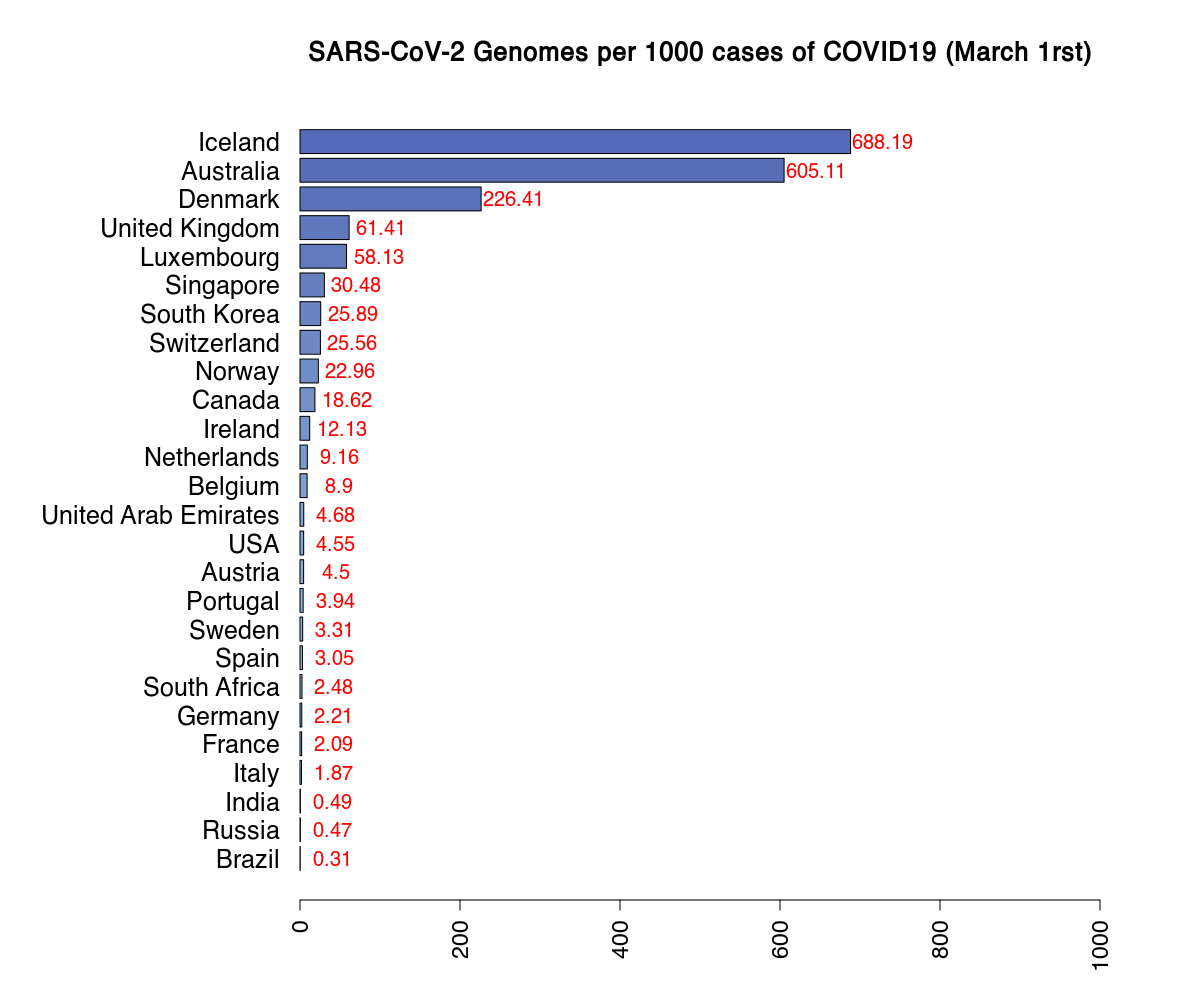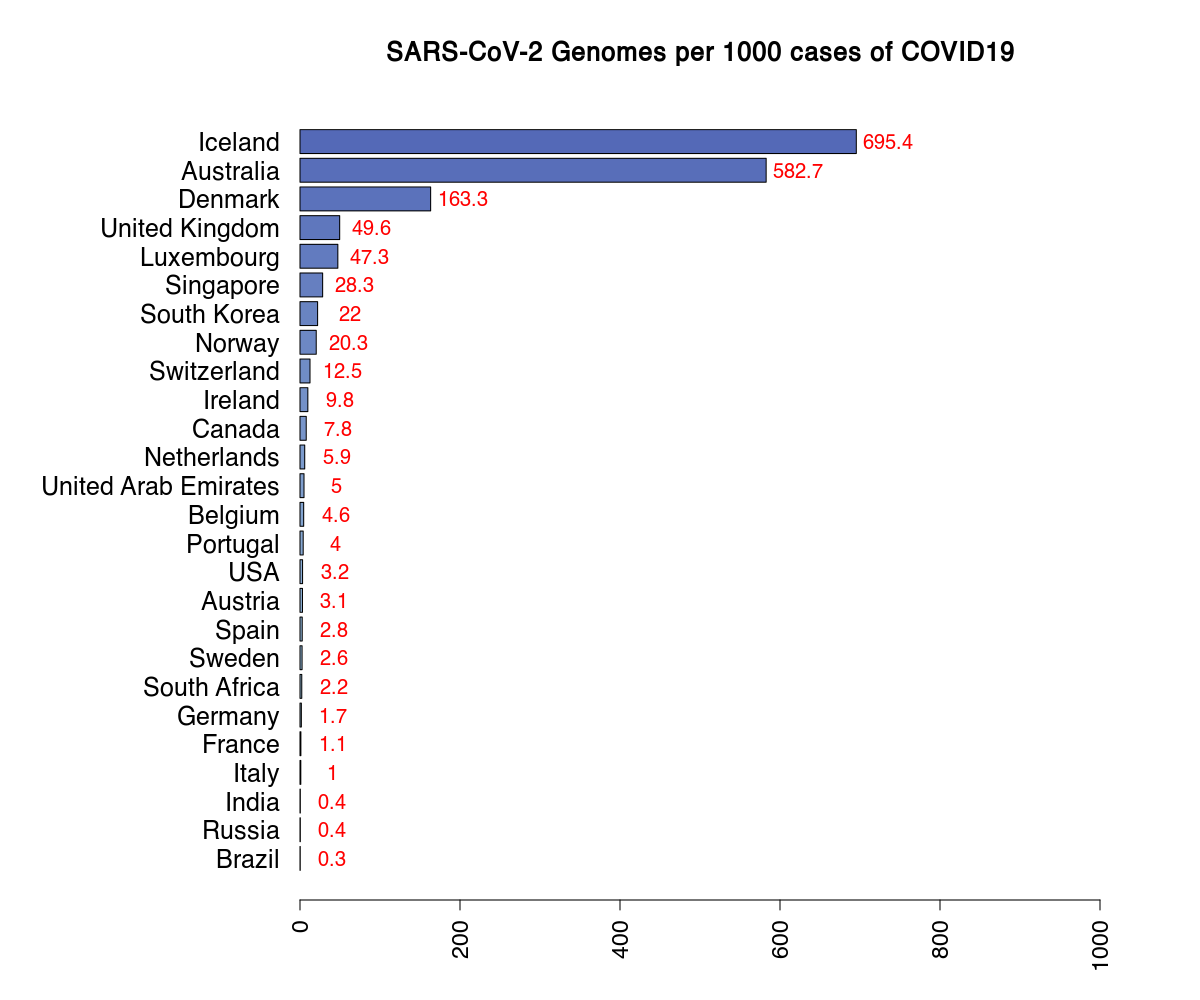SARS-CoV-2 genomes per 1000 cases of COVID-19. March 1rst update
Published: 10 March 2021

SARS-CoV-2 is the etiological agent (the pathogen that causes the disease) of COVID-19. Sequencing the genome of the pathogen allows the monitoring of its evolution and the identification of novel strains or new variants. This approach is known as “genomic surveillance”, and represents the first line of defence against the spread of more dangerous variants of the virus, and at the same time can provide useful indications for the development of novel vaccines or drugs. To be effective, a genomic surveillance system requires that a significant proportion of the genomes of the pathogens circulating in a specific country/geographic area are sequenced systematically in a short interval of time. The graph provides exactly this information and reports the number of pathogen genomic sequences that have been fully determined, by thousands of COVID-19 cases reported by national health authorities in different countries worldwide. This graph should provide an overview of how powerful genomic surveillance systems currently are in different countries.
The “main” figure of this highlight is based on genomic sequence metadata, as available on March 1 2021. To facilitate comparison, and illustrate recent developments an equivalent figure based on data available up to January 23rd 2021 (previous update) is reported below.

By comparing the 2 figures it is possible to observe that the proportion of genomes sequenced per 1000 cases of COVID-19 has increased steadily, in the last month for the majority, if not all, the countries considered in our analyses. This is an indication that the efforts to monitor the evolution of the pathogen through the sequencing of its genome have been increased significantly both nationally and globally.
Although some countries are still a long way from sequencing the viral genome for 5% of the reported cases of COVID-19, as recommended by several health authorities, it is reasonable to believe that this goal can be achieved in a not so distant future.
These analyses are based on data, as available on March 1rst 2021.
Sources: https://covid19.who.int/table (COVID-19 cases), https://www.gisaid.org/ and https://www.covid19dataportal.org/ (SARS-CoV-2 genomes)